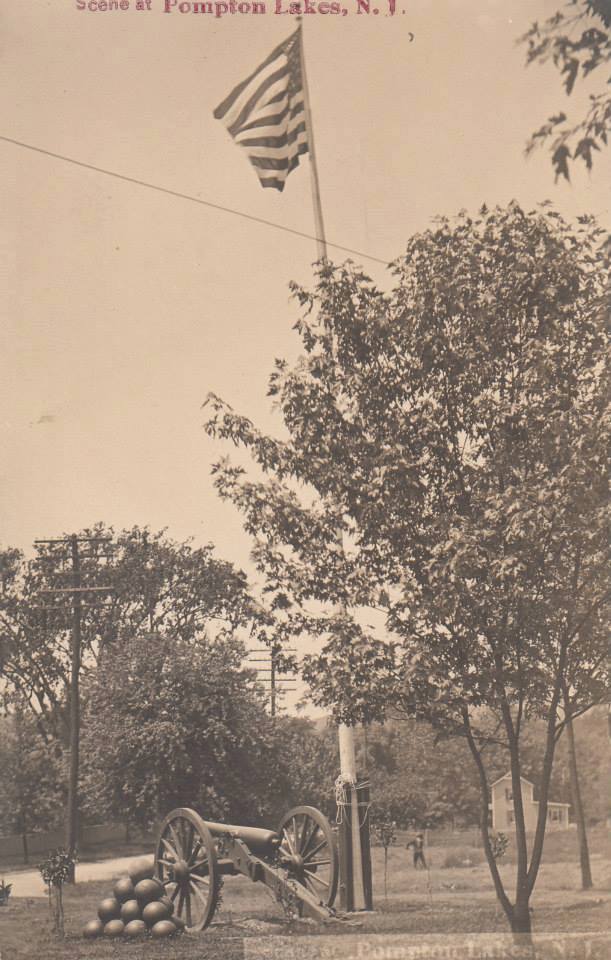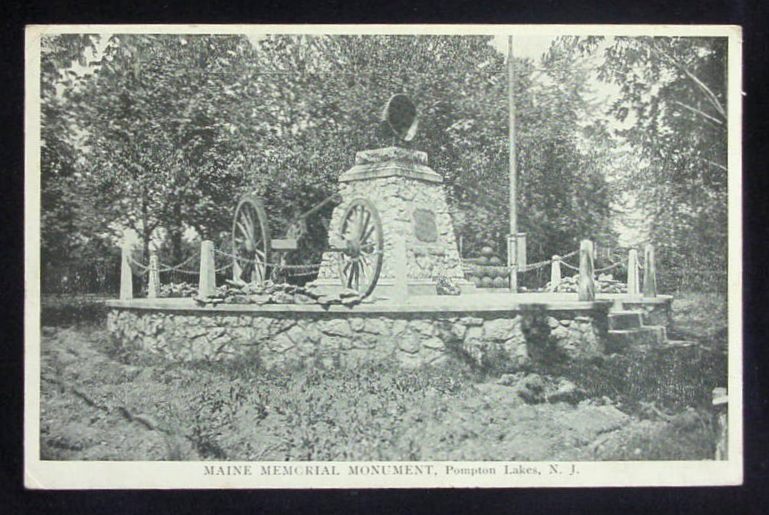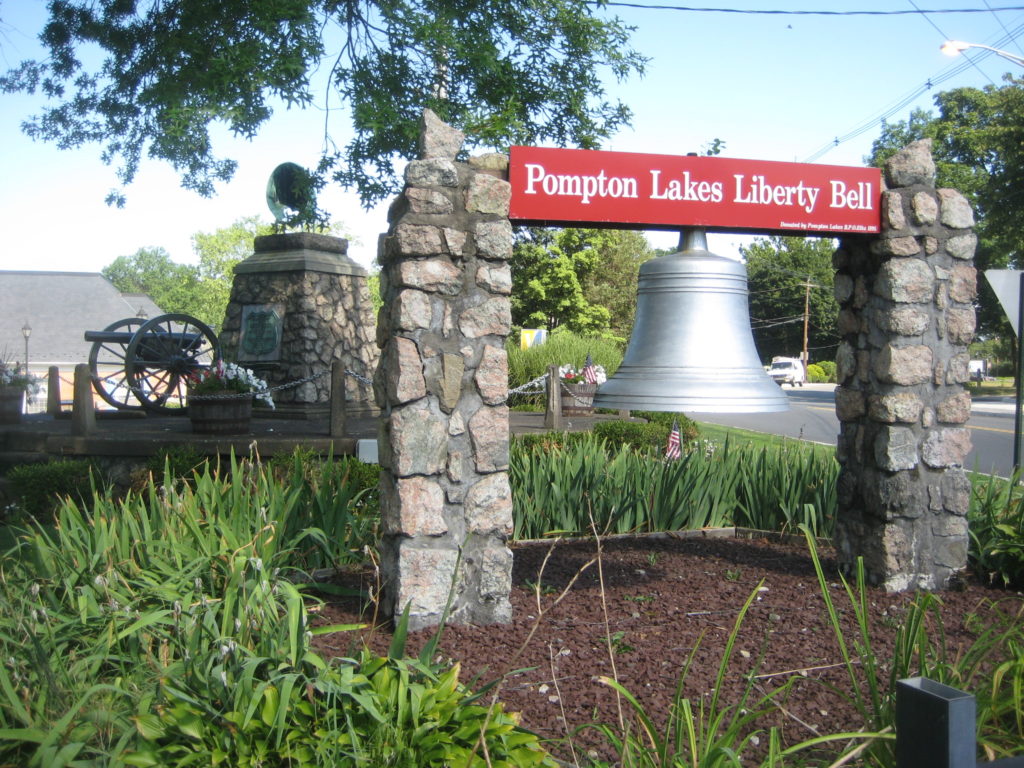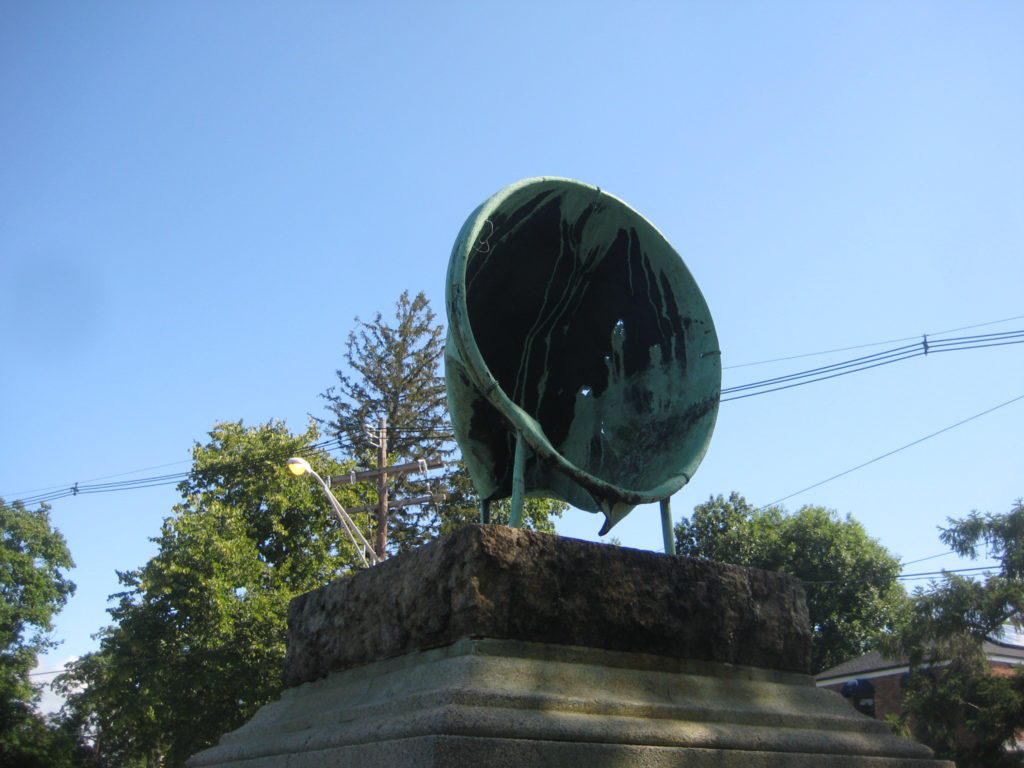The intersection of the Paterson-Hamburg Turnpike and Wanaque Avenue, in Pompton Lakes, has featured several noteworthy structures. Here’s one of them.
During the Revolutionary War, a house known as the Yellow Tavern stood close by the intersection where the present-day Federal Square memorial now stands, on a triangle of land. The tavern welcomed visitors on their journeys throughout north NJ, including General George Washington and his officers and men. It was razed about 1890 “to permit the changing [widening] of the roads,” as an old manuscript put it. (The house that replaced the tavern, much later known as the Ramapo Valley House, survived… but that’s another post.)

A memorial consisting of a cannon (likely Civil War), a stack of cannonballs, and a “liberty pole” topped by an American flag, stood upon the triangle of land at the historic intersection until 1914. On Labor Day of that year, a town memorial was dedicated on the site to honor the men who lost their lives when the U.S.S. Maine exploded in Cuba’s Havana Harbor on February 15, 1898. “Remember the Maine!” became a rallying cry.
This tragedy cost 260 American lives and later led to the Spanish-American War of 1898. This link will bring up a list of the casualties by name and rank, but it doesn’t include their hometowns. (Here’s a lengthy article which outlines how to discover more information about them.)

Consisting of a raised round platform and a fieldstone-and-concrete tower, the monument on the triangle — also known as Federal Square — “contains a copper ventilator from the Maine battleship. The ventilator was transported to Pompton Lakes by Harry Hershfield, a Pompton Lakes Mayor who went on to become a state Senator.” As you can see in the photo below, the existing memorial was incorporated into the design, and a chain was draped around the raised platform.


Since then, many cosmetic changes have been made to the memorial site, which now features nice greenery and a historic marker denoting the site of “Washington’s Headquarters”. The origin of the cannon was forgotten long ago, and the pile of cannonballs disappeared at some point. Two nearby memorial stones honor the dead of World War I, World War II, and the Korean War. A flagpole flies the American flag and, below, a POW/MIA flag in memory of those who served in the Vietnam War.

And so the Maine monument at Federal Square has remained, nearly untouched, although time is taking a toll.

The copper ventilator, unprotected from the elements, has been slowly disappearing over the past century. Click for full-sized image.
Why is this article titled “Remember the Maine!” ? The actual cause of the explosion will likely never be known, but the theory that a Spanish mine in the harbor was the reason she sank (never mind that she was riding at anchor) caught fire with the press:
[P]opular opinion in the U.S., fanned by inflammatory articles printed in the “yellow press” by William Randolph Hearst and Joseph Pulitzer, blamed Spain. The phrase, “Remember the Maine! To hell with Spain!”, became a rallying cry for action, which came with the Spanish–American War later that year. While the sinking of Maine was not a direct cause for action, it served as a catalyst, accelerating the approach to a diplomatic impasse between the U.S. and Spain.
Wikipedia
Later investigations would plausibly suggest that the explosion was more likely caused by a magazine explosion within the vessel, possibly caused by a coal fire.